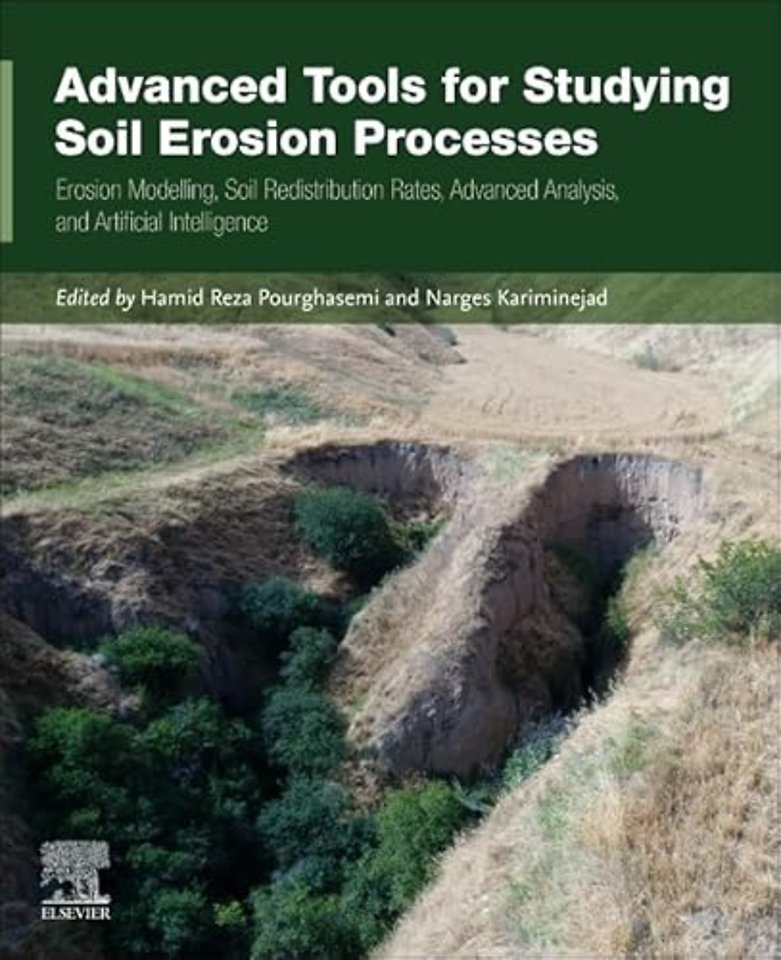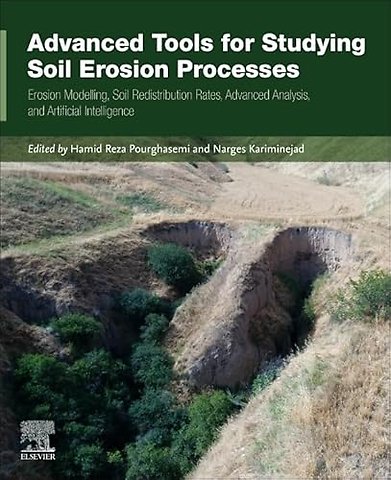<p>Part-I - Erosional processes and impacts<br>1. Mapping land subsidence using time-series analysis of Sentinel-1 InSAR in various land use areas<br>2. Use of hydrological models in erosion and sediment studies: a review<br>3. Comprehensive introduction to Digital Elevation Models, as a key dataset in soil erosion mapping<br>4. Eco-geomorphic reconstruction and illustration of the erosional landforms from a geomorphological point of view<br>5. Extraction of water bodies using machine learning and water body indices in an arid region, comparison, and application: A case study Naser Lake Egypt<br>6. Leveraging remote sensing data and machine learning models to estimate suspended sediment concentration (SSC), a vital water quality parameter to assess soil erosion effects<br>7. The messianic tail of cyanobacteria: Revival role of microbial biological crust on restoring degraded soils<br>8. Analyzing the homogeneity of the paired catchments using the fractal dimension of the drainage network and catchment shape<br>9. Fractal analysis of drainage network and its relationship with flooding potential in arid areas<br>10. Climate change and soil erosion dynamics: An overview<br>11. Mapping rangeland vegetation types sensitive to soil erosion in semi-arid of Iran<br><br>Part-II - Advanced computing techniques to quantify soil erosion<br>12. Event-based soil erosion estimation in a tropical watershed using OpenLISEM<br>13. A scenario-based approach for modeling and monitoring the impacts of climate change on forest fire using MODIS time series images<br>14. Soil erosion analysis based on UAV and SPOT-6 satellite images<br>15. Gully erosion susceptibility assessment using machine learning methods and geostatistical multivariate approach<br>16. Land subsidence modeling and mapping in Darab region, Iran<br>17. Review of multihazards research with the basis of soil erosion<br>18. Prediction of soil erosion using machine learning<br>19. Artificial Intelligence including Machine Learning and Deep Learning algorithms<br>20. Understanding piping process on large dimension piping: Erosion versus weathering<br>21. Quantile random forest technique for soil moisture contents digital mapping, Sarvestan Plain, Iran<br>22. Modeling spatial variability of soil loss tolerance (T-value) using geostatistical approaches (case study: Dorudzan Watershed, Fars Province, Iran)<br><br>Part-III - Methods of soil analysis<br>23. Potential of spectroscopy-based approaches for predicting soil erosion-related parameters: A short review<br>24. Spatiotemporal variations in land use of Mahvelat plain in Iran using Google Earth Engine from 2011 to 2030<br>25. Detecting soil salinization, sodicity, and alkalization hazards within cultivated lands using digital soil mapping approaches<br>26. The impact of geomorphological hazards (i.e., mass movements/landslides) on soil erosion<br>27. Involvement of erosion processes in the development of landslides in the locality of Echiock-Santchou (West Cameroon)<br>28. Digital mapping of soil pH in arid and semi-arid regions<br>29. Unraveling the spatial signature of gully erosion in the arid and semi-arid regions of the northeast of Iran: Every single factor matters!<br>30. Soil erosion monitoring using the perpendicular soil moisture index as a remote sensing index<br>(case study: Salehiya Wetland, Iran)<br>31. Scrutinizing of soil erosion spatial distribution through explicit spatial HRU approaches in SWAT model<br>32. Application of ANSWERS model for calculating runoff and sediment prediction from steep agricultural watersheds in northern Iran and its comparison with the other related models<br>33. Susceptibility of the erosional landforms (Case study: Razavi Khorasan Province, Iran)</p><p>Index</p>

